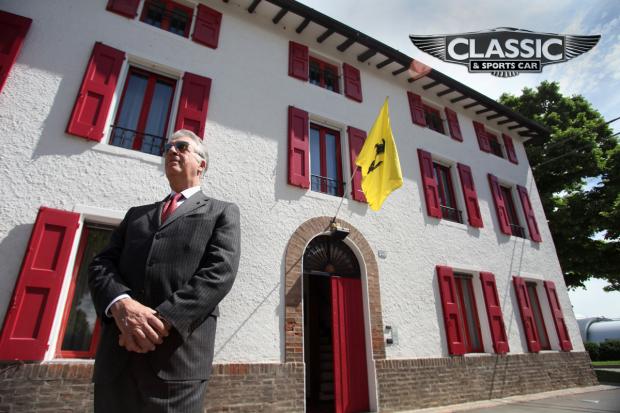We have something of a coup by being granted upwards of two hours and a personal tour of Maranello from Piero, but where to start? Not with his relationship with his father, that’s for sure. Piero, born of Enzo’s long-term affair with Lina Lardi, was never conspicuously the apple of his father’s eye. That place was reserved for the tragic Dino, who died in 1956, aged 24, from muscular dystrophy. In fact, Piero wasn’t even conspicuously part of the family until, at the age of 18, he was brought into the fold after the death of his grandmother. Even then he was held on the fringes until Laura Ferrari also passed on.

Now, however, as vice chairman he holds the keys to the kingdom, or at least the 10% of it not held by Fiat and Abu Dhabi. There’s a starting point: how does he feel about that? Remarkably calm, it seems: “There have been a lot of changes in Fiat over the past 20 years, but Ferrari has always maintained a level of independence. They respect that. It has always been paramount that the purity of Ferrari, its freedom, is not diluted even though its ownership may have been.”

What of the Ferrari World theme park, soon to open in the Middle East, that so many see as anathema to the exclusive qualities that the brand has built up over the years? Minutely analysing Piero’s face for signs of disapproval proves fruitless: either he is a consummate pro, or he really does like the plan. He senses the scepticism: “Look, we don’t have the time or resources to become a tourist attraction. There is more in Maranello to see and do than ever before, but if this venture helps more people to connect with the company in a way that we can’t accommodate here, then it must be good for us.”

We move on to a spectacular 275GTB/4. We have read that it is his favourite Ferrari and the firm has obligingly moved it from its Galleria museum for Piero to wax lyrical. He doesn’t, but patiently explains why: “Everyone asks me what is my favourite Ferrari. In that respect I am like my father: my favourite is always the next one. But I will say that the 275 is a car that I will never forget. I was driving this when I was 18, can you imagine that?” The fact that even now he clearly feels he was privileged as a teenager is gratifying and he does then fall silent, spending a long time looking at the car with lingering, loving glances. “It is like Sophia Loren,” he finally explains, rolling his finger aound the inner edge of one of the gill slats. “A very nice woman of a respectable age who still looks very nice. We still use these cars as inspiration for the cars we make today, in the way they look, the spirit of what they represent and especially in the quality of the build.”

The 275 was not exactly Piero’s company car when he joined the empire in November 1965, but it was symptomatic of his sudden elevation and acceptance: “I think it would have happened anyway, much later maybe, but my grandmother was a very strong woman, the only person who my father obeyed without question, and she had insisted that he bring me into the business. She died that year and it happened straight after.”













